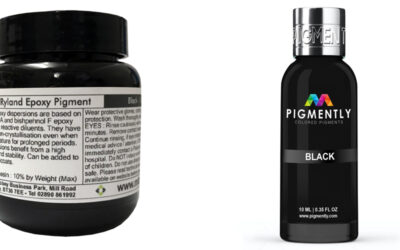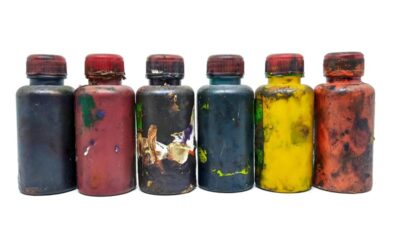Epoxy resin products are incomparable in aspects of beauty, classiness, and standard. The best...
Epoxy Resin Color Ideas, Tips and Tricks, Reviews, Buying Guides
Find the best epoxy resin color ideas, tips and tricks, reviews, buying guides to buy or make DIY.
The Best Epoxy Resin Pigment Paste Reviews in 2022
Love using resin products? Want to buy the Best Epoxy Resin Pigment Paste? Something to...
The Best Epoxy Resin Pigment Powder Reviews in 2022
Are you trying to learn about the best epoxy resin pigment powders? Then you have opened the...
The Best Epoxy Resin Liquid Pigments in 2022
The best epoxy resin liquid pigment brings the exact colored epoxy for various uses. No matter if...
We won't spam!
The Epoxy Resin Color Ideas, Tips and Tricks, Reviews, Buying Guides
Epoxy resin is entirely convenient for coloring it with any shade of color and is normally utilized by specialists, skilled workers, and crafters.
Epoxy resin is, in most cases, completely clear and this is additionally wanted for certain applications, for instance, to make various projects, craftworks and so on.
For some different applications, however, it is required to color the material with different shades and tones using different Resin Color Ideas.
Resin Color Buying Guides
There are many things to talk about coloring your resin with different shades. You can do a couple of things and a couple of things you can’t do while coloring the resin and hardener. Realizing these rules will assist with guaranteeing resin shading achievement. Then, at that point, when you understand the standards of how to color in colorful shades in clear epoxy resin, you can realize when to break them.
To get the best outcomes when shading resin, use colorants planned explicitly to shading the resin you are working with. There are two purposes behind this:
1. By utilizing a similar brand of resin and colorants, you can be guaranteed that your resin will fix the manner in which you anticipate. This implies that the resin ought not fix any in an unexpected way (hardness, lucidity, and so forth) than without the colors added.
2. colors planned explicitly for a brand of resin ought to likewise fix with that tone. For example the shadings shouldn’t blur or turn an alternate tone once added to the resin.
If you have at any point bought a resin pack and saw that the hardener is somewhat yellow, you might track down that the resin part has blue added to it. At the point when you blend the two sections, the outcome will be clear. I have encountered issues where I utilized one brand’s green, yellow, or potentially blue and put it into an alternate brand’s resin just to get a shading I wasn’t expecting in spite of the resin restoring ordinarily. You can perceive what I’m discussing in the aftereffects of one of my resin tests.
Resin Color Tips and Tricks
Since you realize the essential resin shading rules, we should attempt to break them. It’s one of the perfect things I would urge you to do with resin.
Here are my fundamental resin shading rules assuming you need to attempt non-customary colorants:
1. Attempt and use as little tone as could be expected. Add until you get the impact you need, then, at that point stop. resin detests dampness, so you would prefer not to add any more dampness than is needed.
2. Ensure the colorant is pretty much as dry as could be expected. I have utilized eye shadows and flavors from my kitchen cupboard that were not bunched and still a free powder.
3. Comprehend the resin you are working with before you attempt to shading it. For instance, epoxies can be an excuse for colorants. Polyurethanes, not really.
Resin Color Reviews
Acrylic paints are great material for using in resin products. Go without any than one section paint to ten sections blended resin. Utilize even less if possible.
When it comes to acrylic paints, you get what you pay for. Some are economical in light of the fact that they have a ton of water in them. It’s the reason in some cases when you use acrylic paints, your resin fixes rubbery, bendy, or not under any condition.
Assuming you need to attempt acrylic paints, attempt the ones that cost more on the grounds that the shading is more thought. You will get more shading in a similar measure of paint as what you would in a less expensive paint.
Good acrylic paint colors are probably pretty much as costly as resin colors. You are not really going to set aside any cash.
Liquor Based Colors
Some liquor colors won’t keep their shading in resin. I have utilized a few brands that are not intended to shading resin and have had issues with the pink and purple colors remaining pink and purple in the resin. They will vanish.
Powders like micas and eyeshadows, Sparkles, Kitchen flavors, Walkway chalk, Watercolor paints etc are also used for these purposes.
Resin Color Ideas
Oil paints are great for use. They make a globby screw with your resin.
It transforms your resin into a monstrous golden.
Latex paint is all in or all out for me. I have utilized it some of the time just to discover it can make your resin wiry.
Maintain a resin diary. Record your recipes and what you did. It will be an extraordinary way for you to reproduce (or not!) something later.
Why do you want to use clear epoxy resin?
First of all, find an answer to this question. Need to get familiar with how to utilize resin to make delightful workmanship, adornments, and specialties? Then, at that point you will need your duplicate of Resin Fundamentals. It contains the fundamental subtleties to get you to resin master status in an evening, regardless of whether you have no involvement in resin!
Final Words
Would you be able to utilize one brand’s colors with another brand’s resin?
The appropriate response is *yes*, however with a reference. The commentary is that at whatever point I have done that I have never had any restoring issues. I have, nonetheless, got an unexpected shading in comparison to what I was anticipating.
Resin Color Ideas are generated by genius crafters. Something you may usually use to color an epoxy may have incredible outcomes however may not work with polyurethane. Polyurethanes are unimaginably dampness prone.




